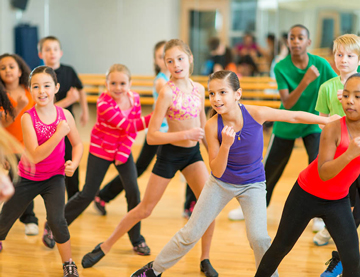Banner Image

We know that being physically active is good for children’s physical development, emotional health and learning at school. But how do you ensure safe exercise for students when they are in your care on a school camp, school activity or school excursion?
This article contains simple measures to ensure children remain safe while they exercise – without reducing the fun factor.
Top tips for safe exercise
Our top tips for safe physical activity on school activities, school excursions and school camps include:
Warming up. There’s a reason why elite athletes take their warm up sessions so seriously – it literally ‘warms up’ their muscles and helps prevents injury by softening muscles and making them more supple. If you’re on school camp or school activity and plan to go on a hike, climb, or obstacle course, remember to stretch the muscles you plan on using. Hold each stretch for 10-20 seconds. Or, go for a brisk walk or slow job, or practice the specific skills students are about to use (ie kicking, throwing or catching).
Cooling down after exercise. During high intensity activity, waste products collect around the muscle tissue until they can be carried away by the lymphatic system. That’s why it is so important to cool down after exercise, because not only does it help the lymphatic system to do this, but also relaxes and softens muscles. Cooling down can be as simple as slowly reducing the intensity of the activity you’re doing, or stretching out specific muscle groups (but hold the stretches for a little longer, this time). It’s also a good idea to put on warmer clothes, so the body can cool down slowly.
Keep hydrated and avoid sunburn. During warmer weather, ensure students wear sunscreen and a hat – and drink water before, during and after playing sport. If a student complains of a headache or starts acting strangely, consider dehydration as a cause. Give them a drink and sit them in a cool place. If they don’t feel better in 10 minutes, take them immediately to a hospital emergency department or call triple zero (000).
Top tip: Remember, like adults, children have different levels of skill and fitness. By mixing up the type of exercise and trying different activities, everyone can have fun and get involved.
How much exercise is enough?
According to Federal Health Department guidelines, it is recommended children and young people:
- Do at least 60 minutes each day of moderate to vigorous physical activity that makes the heart beat faster (football, basketball, netball, swimming, dancing). More is better. It doesn’t have to be a full 60 minutes at once – several shorter sessions through the day work too.
- As part of the 60 minutes of daily activity, include muscle and bone strengthening activities 3 days a week (running, climbing, swinging on monkey bars etc).
- Several hours of light physical activities each day (walking to school, helping around the house or walking the dog).
- Have no more than 2 hours of sedentary recreational screen time per day (not including screen time for school work)
- Have 9-13 hours sleep a night.
Source : Healthdirect.gov.au https://www.healthdirect.gov.au/safe-exercise-for-children
